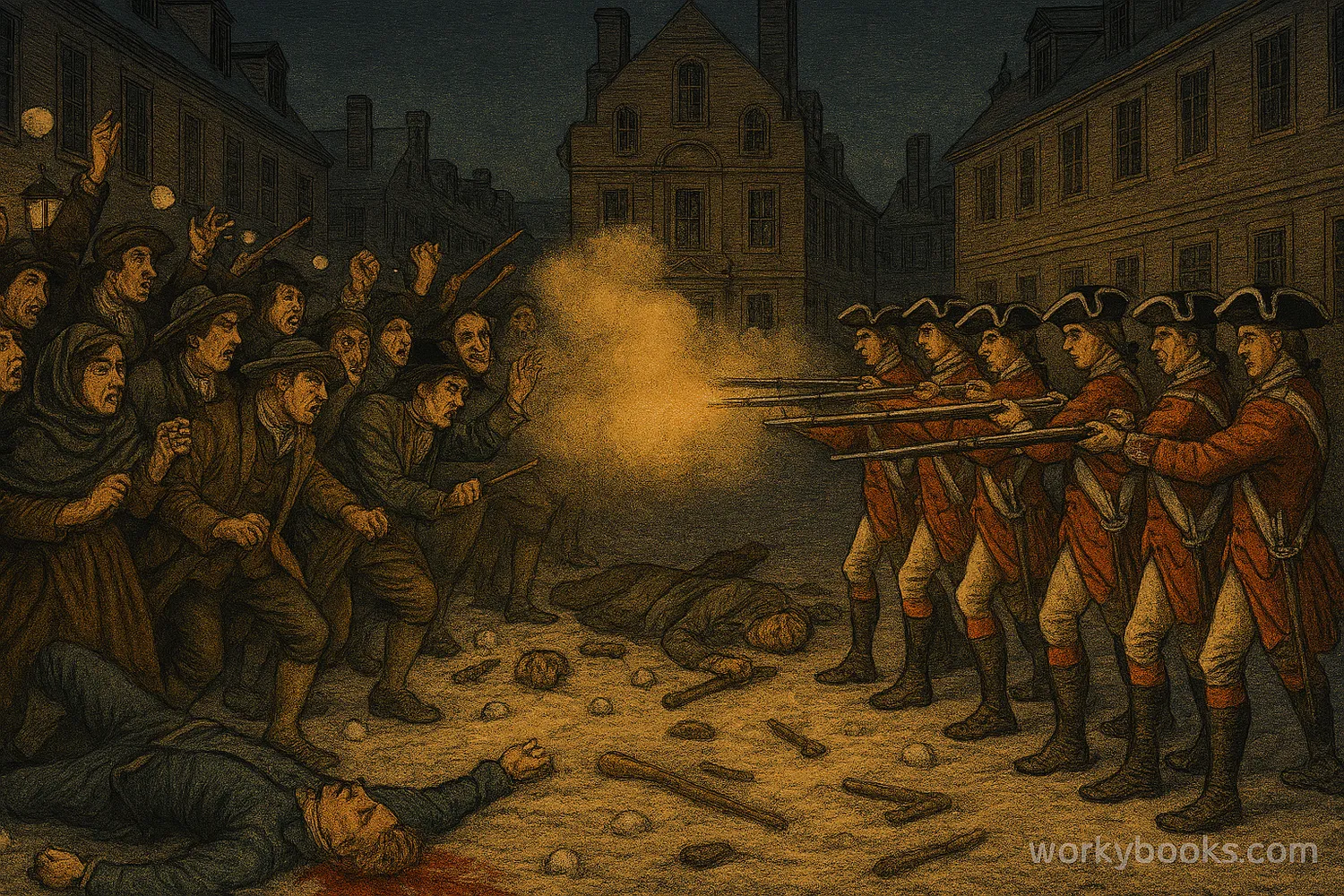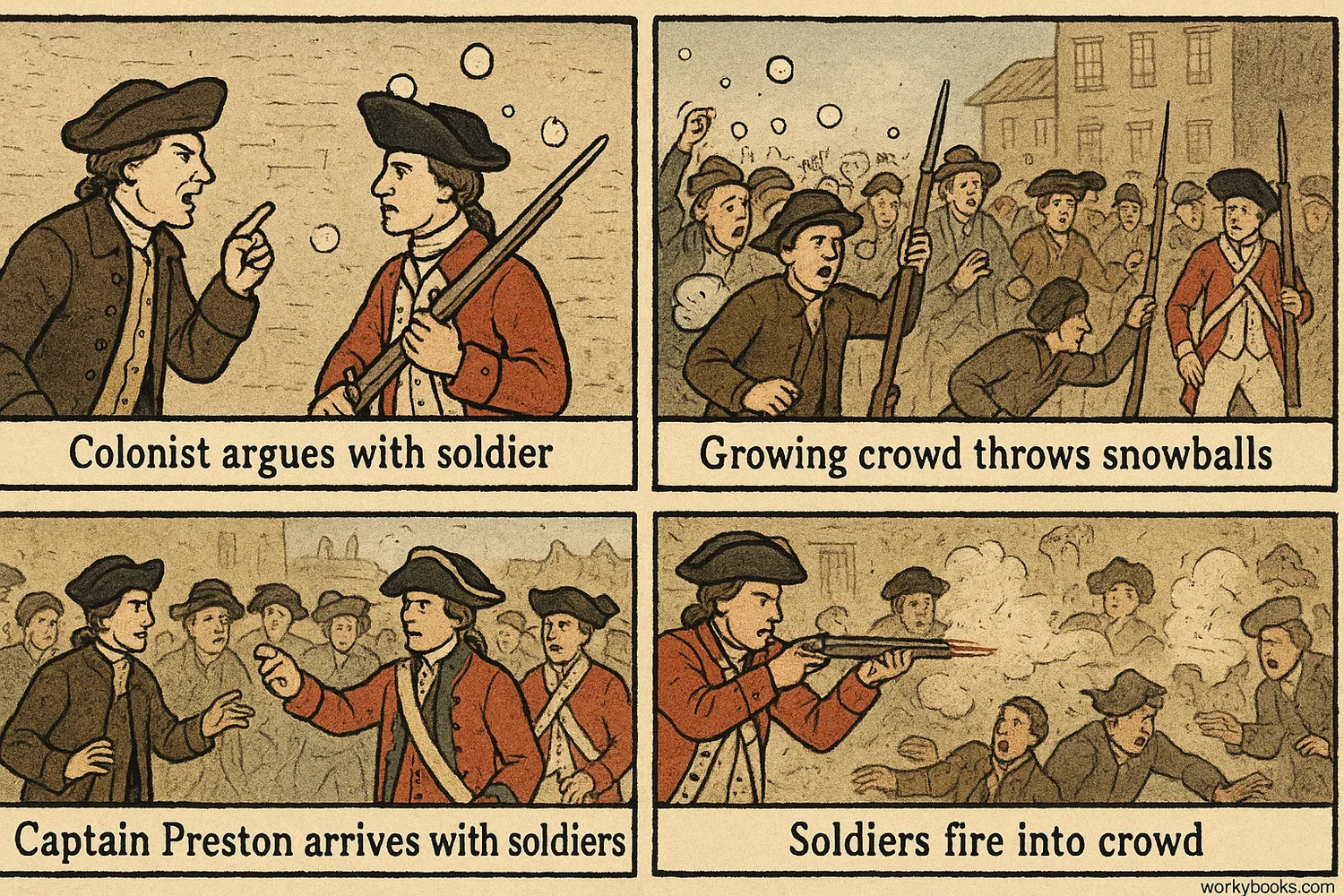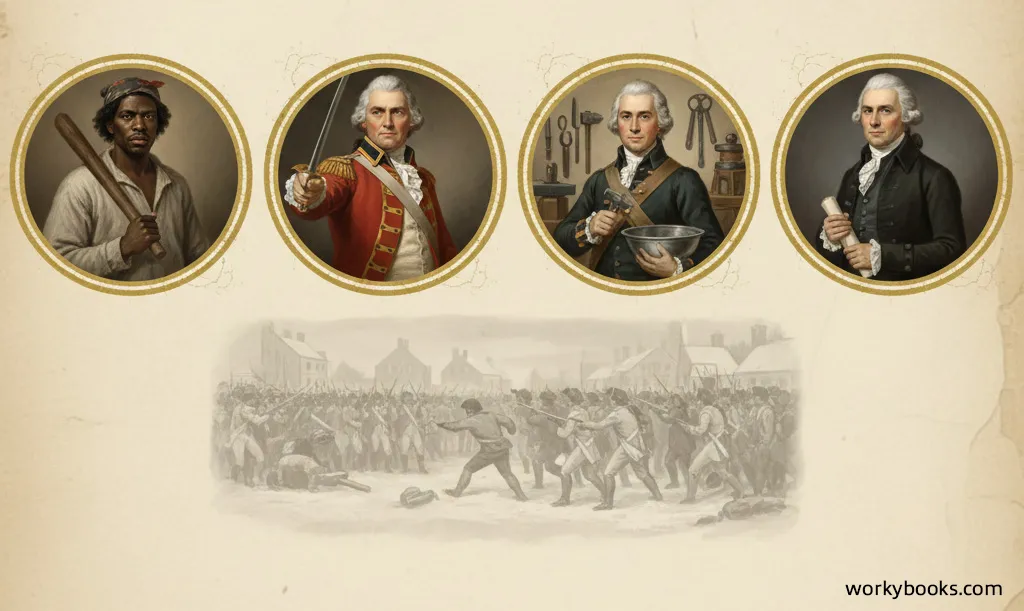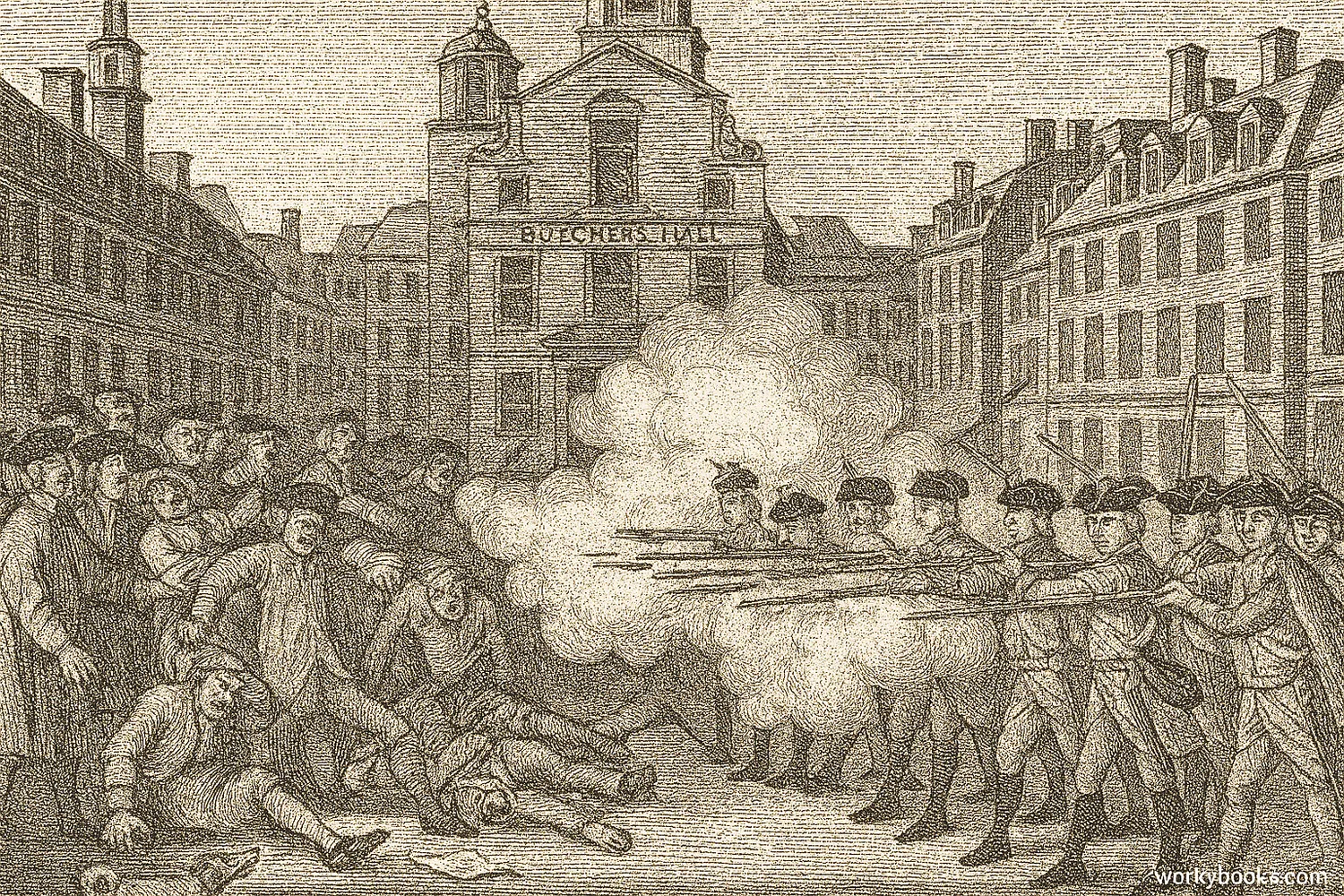Boston Massacre
Discover how this pivotal event in 1770 fueled tensions between American colonists and British soldiers, leading to the American Revolution.
What Was the Boston Massacre?

The Boston Massacre was a pivotal event in American history that occurred on March 5, 1770. It was a violent confrontation between British soldiers and American colonists in Boston, Massachusetts. Tensions had been growing for years between the colonists and British authorities over issues like taxation without representation.
On that cold March evening, a disagreement between a British soldier and a colonist escalated into a larger conflict. A crowd of colonists gathered, throwing snowballs, stones, and sticks at the soldiers. In the confusion, the soldiers fired into the crowd, killing five colonists and wounding several others.
Did You Know?
The Boston Massacre was one of the key events that turned colonial sentiment against British rule and helped spark the American Revolution just five years later.
Events of March 5, 1770

The Boston Massacre didn't happen suddenly. It was the result of growing tensions that had been building for years. Here's how events unfolded on that fateful day:
Evening Conflict
A young colonist argued with a British soldier at the Custom House, drawing a crowd
Crowd Gathers
More colonists joined, throwing snowballs, ice, and other objects at the soldiers
Soldiers Arrive
Captain Thomas Preston and seven soldiers came to protect the Custom House
Shots Fired
In the confusion, soldiers fired into the crowd, killing five colonists
The Five Victims
The colonists killed in the Boston Massacre were: Crispus Attucks, Samuel Gray, James Caldwell, Samuel Maverick, and Patrick Carr. Crispus Attucks, a man of African and Native American descent, is often considered the first casualty of the American Revolution.
Key Figures

Several important people were involved in the Boston Massacre and its aftermath. Understanding these individuals helps us better understand this historical event:
Crispus Attucks
A sailor of African and Native American descent, considered the first person killed in the Boston Massacre
Captain Thomas Preston
The British officer in command of the soldiers during the incident
Paul Revere
Silversmith who created an influential engraving depicting the event, though it wasn't entirely accurate
John Adams
Future U.S. President who defended the British soldiers in court, believing in fair trials for all
These individuals played different roles in the events of March 5, 1770, and their actions had lasting impacts on American history. John Adams' decision to defend the British soldiers was particularly notable, as it demonstrated his commitment to the principle that everyone deserves a fair trial.
Aftermath and Impact

The aftermath of the Boston Massacre had significant consequences that would eventually lead to the American Revolution:
Trial of Soldiers
Captain Preston and his soldiers were put on trial for murder. John Adams successfully defended them, arguing they acted in self-defense.
Propaganda War
Paul Revere created an engraving that showed British soldiers firing on peaceful colonists, which wasn't entirely accurate but inflamed anti-British sentiment.
Annual Commemorations
Colonists held annual ceremonies to remember the victims, keeping anti-British feelings alive.
Boston Tea Party
Continued tensions led to the Boston Tea Party, where colonists protested British tea taxes by dumping tea into Boston Harbor.
American Revolution
The Revolutionary War began, partly fueled by anger over events like the Boston Massacre.
The Boston Massacre became a powerful symbol of British oppression for American colonists. Each year on March 5, speakers would remind people of the event, helping to keep revolutionary feelings strong. The incident demonstrated how a single event could galvanize public opinion and move a society closer to revolution.
Boston Massacre Quiz
Test your knowledge about the Boston Massacre! Answer all 5 questions to see how much you've learned.
Frequently Asked Questions
Here are answers to common questions about the Boston Massacre:
Boston Massacre Trivia
Discover interesting facts about the Boston Massacre!
Crispus Attucks Day
In 1858, Boston began celebrating "Crispus Attucks Day" to honor the first person killed in the Boston Massacre. Attucks became a symbol of African American contribution to American independence.
Fair Trial Principle
John Adams' defense of the British soldiers established an important American legal principle: even unpopular defendants deserve a fair trial with proper legal representation.
Revere's "Copy"
Paul Revere's famous engraving was actually based on a drawing by Henry Pelham. Revere created his version quickly and distributed it before Pelham could publish his original.
Annual Orations
For years after the Boston Massacre, colonists held annual commemorations featuring speeches by prominent figures like John Hancock and Dr. Joseph Warren, keeping revolutionary spirit alive.


